NA P-51D Mustang
Background
The P-51 Mustang had its origins in the A-36 Invader. Built to meet a British requirement in 1939, it is traditionally said to have been produced in 102 days. The project was quick, but that was because it drew on earlier work - as the Invader was in turn a development of a private development by North American for an attack/fighter aircraft. The Invader also included a number of systems taken from the AT-6 Harvard trainer. Later modified to use a Rolls Royce (Packard) Merlin in place of the original Allison V-1710, the aircraft became outstanding in the fighter role.
The RNZAF operated 30 aircraft (NZ2401-2430) which were the first of 370 replacements for the F4U-1a/d aircraft, intended for use in the fighter/ground attack role. With the end of the war the number of aircraft required was reduced, and only these aircraft which had been delivered were accepted, the remainder of the order being cancelled. The P-51D-30NT were built at the Dallas TX plant for the USAF. The aircraft arrived in August - September 1945 and were immediately placed still cocooned in storage at Ardmore. In 1951 they were activated for use, as the government contemplated sending a squadron as part of its commitment to the UN in Korea. NZ2406 made the first flight from Ardmore on August 19, 1951 before joining the Central Flying School at Wigram. The Korean squadron did not eventuate, and the aircraft were issued to the four Territorial Air Force squadrons.
The TAF had been reformed in 1948 and initially used Tiger Moths and Harvards. From June 1952 the squadrons were each allocated five Mustangs and three Harvards. The squadron aircraft were identified by a chequerboard pattern on either side of the fuselage roundel - 1 (Auckland) Squadron blue and white, 2 (Wellington) Squadron black and yellow, 3 (Canterbury) Squadron red and black, and 4 (Otago) Squadron blue and yellow. The colours correspond to the colours of the provincial rugby teams. The aircraft were used at weekends and during annual camps. It should be noted that at Camps the aircraft operated as a pool - two of 4 (Otago) Squadron's aircraft were written off by 1 (Auckland) Squadron pilots The withdrawal of the Mustangs was announced in May 1955. They were withdrawn due to deterioration of the airframes (officially because of 'undercarriage' problems), although the highest use aircraft had only done in the order of 480 hours. Six aircraft had crashed in the eight months prior to the announcement. The TAF squadrons were also withdrawn on July 31, 1957
In service a total 10 aircraft had been destroyed or written off in accidents. Two had become instructional airframes (NZ2401/INST162 and NZ2405/INST164). One had been damaged prior to assembly and was reduced to spares without being used. The remainder were flown into storage at Woodbourne apart from four aircraft which continued to be operated by 42 SQN as drogue-tugs until 1957. The last official RNZAF P-51 flight was made by NZ2423 on May 30,1957. The 17 surviving aircraft were sold for scrap in 1958. Having been declared surplus (sr.293/57), a Government Stores Board tender was issued (No5296) on April 9. This closed on April 28, and most of the aircraft were sold on May 2. A rough listing of the RNZAF Mustang details can be found here.
Four RNZAF P-51D Mustangs survive:
- NZ2406 (c/n 124-48248, ex 45-11495) made its first flight after storage at Ardmore on August 19, 1951, after which the aircraft served with the Central Flying School. It is noted as being with 75 Sqn in July 1952, and served with 2 Sqn from June 22, 1953 to Nov 25, 1955. Sold by tender with the remaining Mustangs, no information is currently available to me on the aircraft's subsequent locations, but the remains are reputed to have eventually made their way to the RNZAF Museum. The aircraft is currently a restoration project held by Philip Warner near Cheltenham in the UK. The aircraft has been described as a nearly complete fuselage, sans wings.
- NZ2417 (c/n 124-48260, ex 45-11507) served with 3 (Canterbury) TAF Squadron from June 10, 1952 to August 11, 1955). Sold in 1958 to Ron Fechney for 75 pounds, the aircraft was trucked to Omaha in South Canterbury. The aircraft wings had been torched, but a full mainplane (from NZ2409) was later acquired from Motueka. A replacement canopy and a spare engine were purchased from Cliff Horrell in Ashburton. In 1960 Ron sold a half share in the aircraft to John MacDonald. The aircraft was restored to airworthiness in November 1964. Registered as ZK-CCG, the aircraft was better known as the 'Mobil' Mustang , as the oil company supplied fuel in return for logos painted on the red and white P-51D. The aircraft acumulated approximately 120 hours as it operated around the country at a variety of events. It was placed in storage at Omaha in 1968 as the CoA came due. The aircraft was sold in 1974 to John Schauffhausen, being flown to Christchurch and then shipped to the USA. The aircraft was registered as N921, and painted as "Cripes a Mighty 3rd" as flown by Mjr. George E. Preddy of the 352nd Fighter Group. The aircraft was sold to Gene Stocker who raced it until 1978 when it was stored. In the early 1980s the aircraft underwent a complete restoration. Acquired by Kermit Weeks in 1983. The aircraft suffered damage during Hurricane Andrew in 1992 but has been restores to airworthiness. It remains with the Weeks collection.
- NZ2423 (c/n 124-48266, ex 45-11513) served with 2 (Wellington) Squadron from July 12, 1954 to October 25, 1955. It was one of the four aircraft retained for use as a target tug by 42 Squadron, and was the last operational Mustang having being flown into storage on May 30, 1957. Subsequently sold by tender, the aircraft was purchased by John Smith. Today the aircraft is still in storage with Mr Smith at Mapua. Although all the parts are present, this aircraft had the wings torched off before it could be salvaged.
- NZ2427 (c/n 124-48271, ex 45-11518) served with 3 (Canterbury) Squadron from October 17, 1952 to August 9, 1955. The aircraft had its wings torched prior to being sold by tender in 1958 to Barry North and Peter Coleman and taken to Omaka. A replacement mainplane was purchased and the aircraft was restored to taxiable standard. Peter Coleman later bought out Barry North's share and the aircraft was moved to his Benmorven Rd home. In the 1980's he moved into Blenheim and the aircraft was dismantled for storage. After his death in 1990, the now incomplete but substantial remains were purchased by the AFC with a view to restoration. However, after the purchase of ZK-PLI (see below), the project was abandoned and in 1996 the remains were sold to Maurice Hammond in the UK. Maurice began a rebuild project in Easter 1997 at his base in Eye in Suffolk. This saw the aircraft return to the air on July 13, 2001 in the hands of Rob Davies. Now fitted with a zero-timed former Phillipines Air Force Merlin, Maurice says the aircraft is still 70% original. There has been some reskinning, along with the replacement of plexiglass, control surfaces and missing and perishable components. Like many restorations, the fuselage fuel tank has been removed to make way for a second seat. The gunbays were restored with replica guns of his own manufacture. The completed aircraft has been finished in the scheme of 41-4419 'Janie' flown by Major William Price of the 351st fighter squadron of the 353rd fighter group which was based at Raydon in Essex, England. Today the former NZ2427 is based at Harwick in Norfolk, UK. (illustrated below). A lovely collection of aerial photographs of this aircraft by Bernie Totten can be found here.
Three other P-51D's have appeared on the New Zealand scene in the intervening years. These are:
- A former Indonesian Air Force Cavalier F-51D (c/n 122-41367 ex 44-72487, 72-1541, F367) was swapped for a DH115 Vampire T.11 (NZ5708) in 1985. The aircraft was originally built as a P-51D-30NA at Inglewood CA. It was the last of sixteen (six in its batch) converted by the Cavalier Aircraft Corporation to F-51D specification (new engine, new avionics, taller tail, strengthened wing) for the USAF as part of the Military Assistance Programme (MAP). The Indonesians had operated a number of P-51D Mustangs, and the Cavaliers were the last of the type, with 8 F-51D COIN aircraft delivered in 1973. By 1975 most were unserviceable, and they were replaced by the OV-10F in September 1976. This aircraft has been rebuilt to P-51D configuration by the RNZAF Museum, where it is displayed as NZ2410 in the colours of 4 (Otago) Squadron of the Territorial Air force. (illustrated below).
- ZK-TAF, a P51D-30NA (c/n 122-41369, ex 44-74829, RCAF9265, N8675E, N169M, N169MD, N769MD, NL769MD) was built at Inglewood, CA (June 29, 1945) and delivered to the USAF on July 3, 1945. It was not struck off charge until January 21, 1951, although it is recorded as having been taken on charge by the Royal Canadian Air Force on January 10. It remained with the RCAF until May 14, 1959. During this time it is known to have operated with 402 Squadron at Uplands, Ontario. After its RCAF service the aircraft went back to the US where it was civilianised by Aero Enterprises Inc. of La Porte, IN and registered as N8675E. Sold to Dr Burns Byrum of Marengo, IN in 1967, the aircraft was re-registered as N169M and later as N169MD (perhaps reflecting the owners profession. The next owner was John Dilley of Muncie IN in 1967 who had the aircraft re-registered as N769MD. The aircraft passed to M. Ramsey of Johnson, KS on May 30, 1976; and then to Consolidated Airways of Fort Wayne, IN in November 1982. The last registered US owner was Fort Wayne Air Services Inc in March 1984. At some point the aircraft had been seriously damaged in a forced landing at night (pre-1973?), and now was rebuilt utilising some substantial components of an unidentified ex-Indonesian (AURI) Mustang. It was test flown at Fort Wayne, returning to the air as NL769MD on November 13, 1984. The aircraft was then imported to New Zealand by Sir Tim Wallis and re-assembled at Wigram, where it made its first New Zealand flight on January 24, 1985. The aircraft was presented in the colours of 3 (Canterbury) Squadron CO S/L Ray Archibald's aircraft NZ2415 with its distinctive red spinner. The aircraft continued to operate under its US registration until May 27, 1986 when it was registered to Alpine Helicopters Ltd. In the late 1980's Sir Tim Wallis wanted to sell the aircraft in favour of a Spitfire, so the NZ Historic Aircraft Trust was set up to keep the aircraft in New Zealand. This was successful, but the Trust could only raise sufficient funds to operate the aircraft and could not buy it outright. Major shares were bought by John Sager and Graham Bethell, while the Trust kept an interest. Graham Bethell purchased the aircraft outright in 1996. Today the aircraft is based at Ardmore and is still painted to represent NZ2415. (illustrated below).
- ZK-PLI (c/n 122-39879, ex 44-73420, N7722C) a P-51D-25NA was the last to be imported. Built at Inglewood CA in 1945, the aircraft was shipped to the Middle East on April 18, 1945. However with the war in Europe ended the ship returned to the US and the aircraft was unloaded on July 20th. The aircraft subsequently served with a number of units including the 190th fighter squadron at Boise, ID and 6 units of the Air National Guard, accumulating 1,291 hours. Retired and sold in January 1958, the aircraft was registered as N7722C to D. Bell of Livermore CA. In 1965 the aircraft passed to R. Bixler of San Jose CA, and then to R. Phillips of Vienna VA. When the aircraft went to A. Giebel of Midland TX in October 1978, it had accumulated 1495 hours (with 105 on the engine). On December 20 1984 the aircraft was registered to D. Smith of Midland TX, and when last flown in August 1985 the aircraft had completed 1857 hours (with 495 on the engine). The aircraft was sold to Brian Hore and the AFC and shipped to New Zealand in December 1993, arriving the following month. The US registration was cancelled in January 1995, and it became ZK-PLI on March 28, 1995. Because of the length of time since the aircraft was last used (eight years since the last engine run) a month was spent checking components before re-assemby at Wanaka began. The engine was run a week before the 1994 Warbirds over Wanaka airshow, with the first flight on April 1st being a day before the show. The aircraft was subsequently fitted with dual-controls manufactured by the Santa Monica Museum of Flying. It has been reported that the aircraft is painted to represent 'Isobel III' (41-3573) as flown by F/L Jack Cleland of the 363rd FS, 357th FG from Leiston. This was a temporary scheme worn during the 1998 Warbirds over Wanaka airshow. The aircraft continues to be operated in an unpainted aluminium scheme featuring US markings and the name 'Miss Torque'. Until 2004 the aircraft was operated by Bi-Plane Adventures in association with the AFC. For more information, click here. The aircraft was removed from the New Zealand register on June 4, 2004, with the aircraft having been exported to the USA. (illustrated below)
Last Text Update:- 12 August, 2004
Last Picture Update:- 28 March, 2003
Technical Data
- Accommodation 1
- Dimensions
- Span : 11.27m (37'0ft)
- Length : 9.75m (32'3ft)
- Height : 4.16m (13'8ft)
- Weight
- empty : 3,240kg (7125lb)
- max : 4,560kg (10,100lb) approx
- Power Plant : 1590hp Packard V-1650-7 (RR Merlin 69)
- Performance
- max speed : 712km/h (445mph) at 24000ft
- max climb : 20,000ft in 6.5min
- ceiling : 41,900ft (12,800m)
- range : 3,680km (2,300miles)
Images
G-MSTG / NZ2427
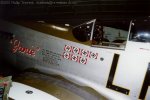
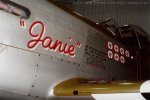

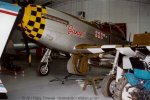
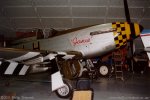
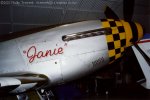

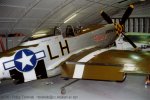
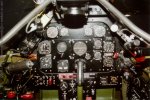


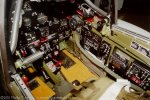
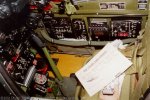
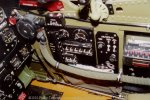
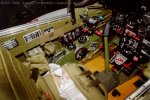
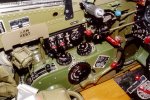
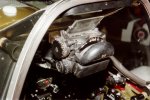
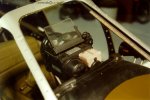
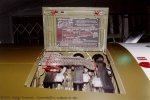


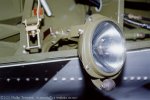
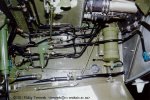
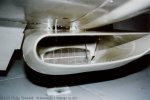
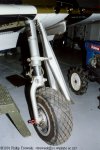



ZK-TAF / as NZ2415
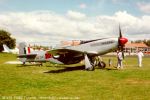
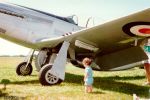
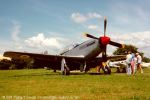
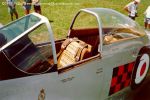
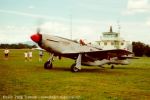
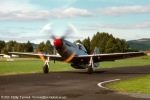
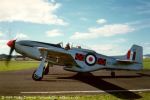

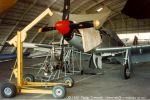
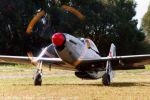
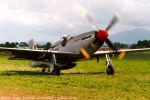
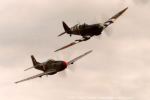
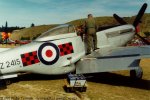
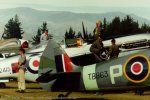
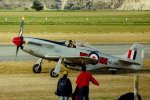
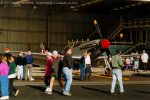
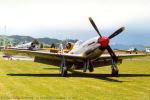

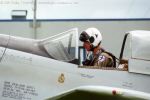
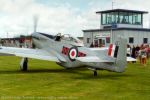
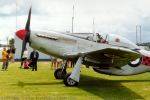
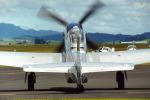
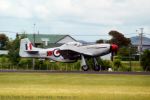

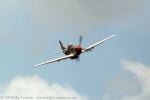

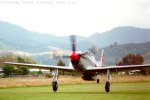
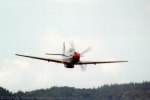
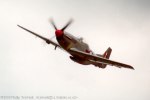
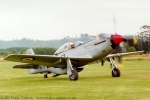
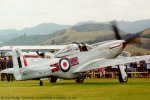
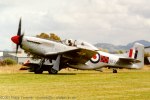


?? / as NZ2410
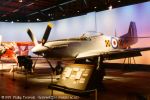
ZK-PLI
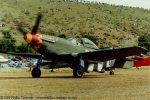
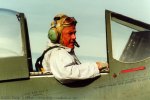
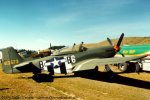
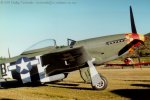

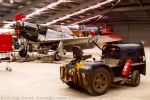
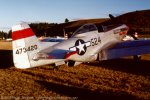
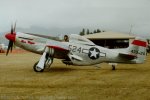
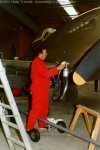
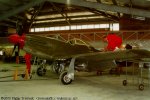
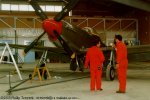

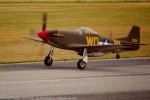
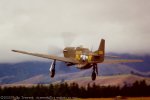
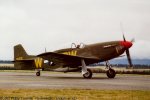
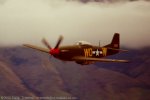

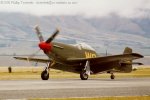
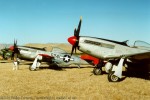
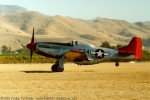
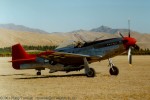
Close Up
Remember to let me know if you have a request for an image of a particular part of the aircraft!
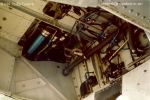
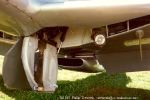
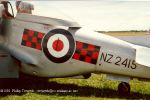
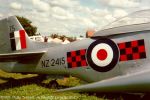


 © 1996-2004 Phillip Treweek, all rights reserved
© 1996-2004 Phillip Treweek, all rights reserved